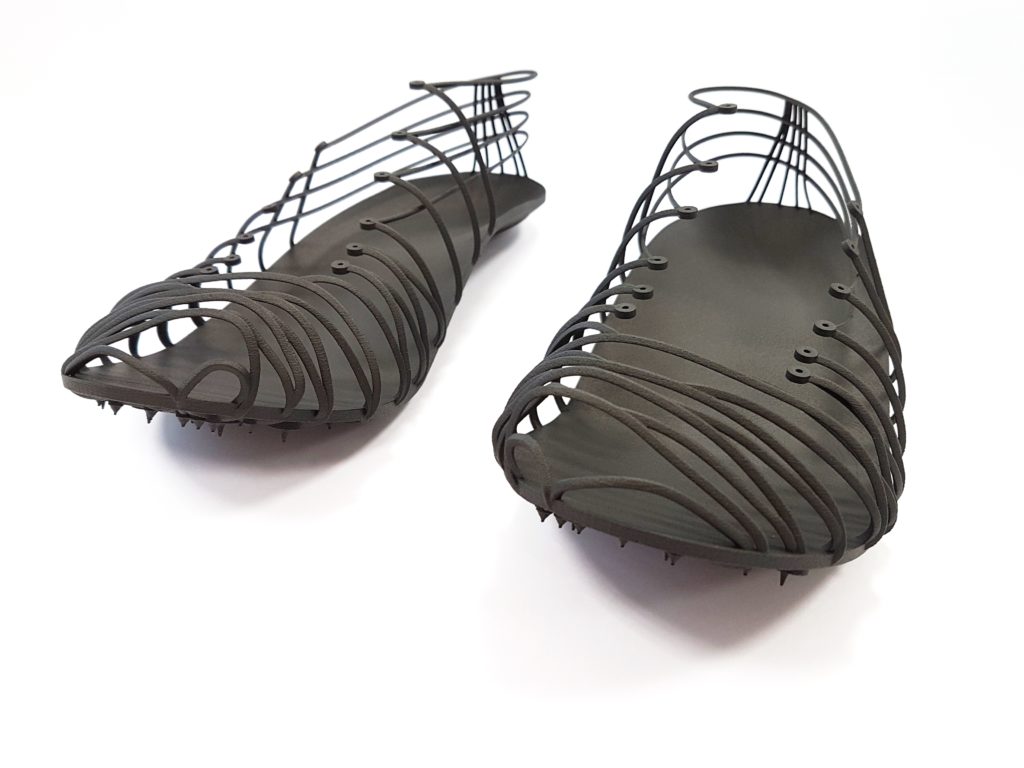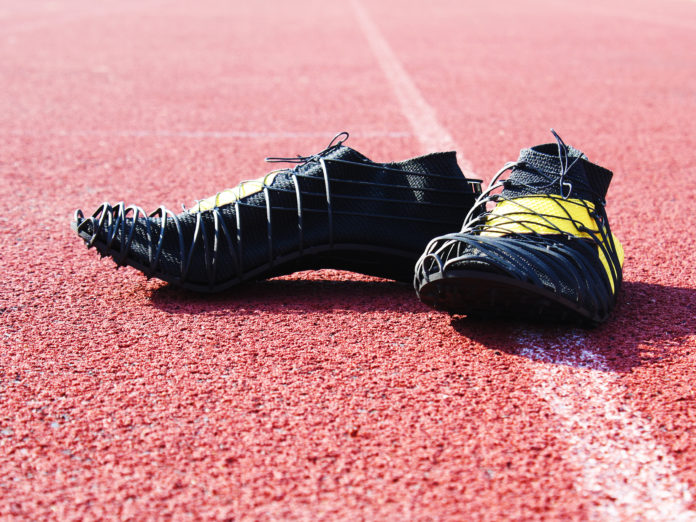With the goal of developing athletics track shoes (in jargon, spike shoes), middle-distance runner Miro Buroni has worked with sportswear brand Diadora and engineering company CRP technology.
As seen in almost all its projects, CRP Technology brings here its expertise in Powder Bed Fusion process with composite polymers fibers-reinforced (short for Selective Laser Sintering), combined with Carbon fiber filled composite materials like Windform® SP.
Middle-distance runner Miro Buroni has created and developed Pleko, customized and revolutionary athletics track shoes (in jargon, spike shoes) with innovative features in terms of production technology and material. Diadora on the other hand, brings its expertise in historical analysis and design.
The manufacture of the shoes

The creation of Pleko started with the three-dimensional scan of the athlete’s foot. This step was followed by the biomechanical analysis of the act of running and footing through the 3D foot scan.
“With this mapping – Buroni comments – we were able to model the shoe on the individual’s needs in terms of foot structure and athletic performance. Moreover, scanning and biomechanical analysis allowed us to understand the best placement of the “traction system” under the outsole, the “pins”.
To give life to the project, Buroni relied on CRP Technology that 3D printed the outsole-midsole and ribbing – the supporting structures of the shoes.
According to CRP Technology, the results of the investigation on the force transmitted to the track shoes during the track race and the connected requirements, revealed the importance of an appropriate material in this process.
Windform SP is a Carbon fiber filled composite material from the CRP Technology’s Windform TOP-LINE range of composites for PBF Laser Sintering technology, with excellent characteristics of resistance to deformation and flexibility: “the right features for the athletics track shoes.”
The part manufactured in Windform SP
CRP Technology manufactured as single unit Pleko’s outsole, midsole, ribs and pins.
Ribs are originated from under the outsole, in correspondence with the lines of maximum effort during the track race.
Thanks to the ribs, the structure in Windform SP embraces the athlete’s foot “like a cage”, which envelops the foot and facilitate improvements in the running technique. The ribs are responsible for carrying the kinetic energy releases from the biomechanical movement during the track race, and preventing its dispersion.
The sock-like upper is almost completely detached from the structure and responsible for protecting the foot.
“Thanks to the pins under the outsole – adds Miro – the “cage” in Windform SP allows the athlete to develop as much strength as possible, without losing energy. I positioned the deepest pins in the points of superior pressure of the feet against the ground. I also put smaller studs in other parts of the outsole: these studs are on a equal basis essential for the stability of the track shoes.”
Once the structural part was 3D printed, other tests have been carried out on the Pleko.
Buroni was very satisfied with the results achieved: “The design and manufacturing technologies, combined with the Windform SP and its mechanical characteristics, made the Pleko track shoes highly innovative, taking the entire, whole project to the highest level of customization and specialization. I am very satisfied with my 3D printed Pleko and Windform SP.”
Remember, you can post job opportunities in the AM Industry on 3D ADEPT Media free of charge or look for a job via our job board. Make sure to follow us on our social networks and subscribe to our weekly newsletter : Facebook, Twitter, LinkedIn & Instagram ! If you want to be featured in the next issue of our digital magazine or if you hear a story that needs to be heard, make sure you send it to contact@3dadept.com






